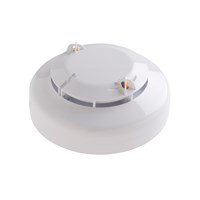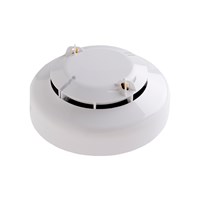SA5100-400APO

Wind Turbines, Global
Industrial
Wind turbines, used to generate renewable energy, are now being protected by Apollo’s next generation Soteria range of detectors.
This project was from one of the biggest wind turbine manufacturers in the world. They have 29,000 employees dedicated to the design, manufacture, and servicing of wind energy projects, totalling 169 GW of installed capacity.
The Challenge
At the heart of each Wind Turbine is the nacelle (plant room) an incredibly dirty environment. A variety of materials contaminate the area: desert sand, pollen, and even oil mist thrown up by the turbine machinery. This can cause detectors in this environment to go into fault, sometimes just months after installation. This leads to the turbine being shut down, and engineers having to be sent to replace the detectors, often in some very difficult locations. This project needed:
- A robust detector with excellent dust protection
- A reliable solution that would last longer than just a few months
- A familiar technology for ease of installation
The Solution
Apollo’s latest Soteria Multisensor technology was chosen for this project. They were encouraged by results in the lab, that showed Soteria detectors lasted 14 times longer in dusty environments than the previous generation of detector.
The initial trials were a success, leading to the installation of almost three hundred devices between multiple wind farms. All running with no faults and minimal drift compensation.
The company have now initiated the process of switching their turbine production to use the new Soteria detectors, as well as reconfiguring their maintenance service so that when maintainers order a replacement device, they always get a Soteria.
Improving sustainability is a main focus at Apollo. We've been able to provide not only a superior product that is better at protecting these wind turbines, but also a product that results in less waste. Which is a perfect combination when designing new detectors.
Products used in this case study
The Soteria Heat Detector features two heat sensors located laterally to ensure accurate heat detection in all orientations.
Soteria Optical Smoke Detector
SA5100-600APO
The Soteria Optical Smoke Detector uses advanced optical sensing technology, PureLight, to provide advanced false alarm management and increased detector reliability.
Soteria Multi-Sensor Detector (Optical/Heat)
SA5100-700APO
The Soteria Multi-Sensor Detector uses advanced optical sensing technology, PureLight, to detect smoke particles entering the chamber and is fitted with two thermistors for detecting heat. It easily discriminates against false alarm stimuli and is a great environmentally friendly alternative to ionisation detectors.


